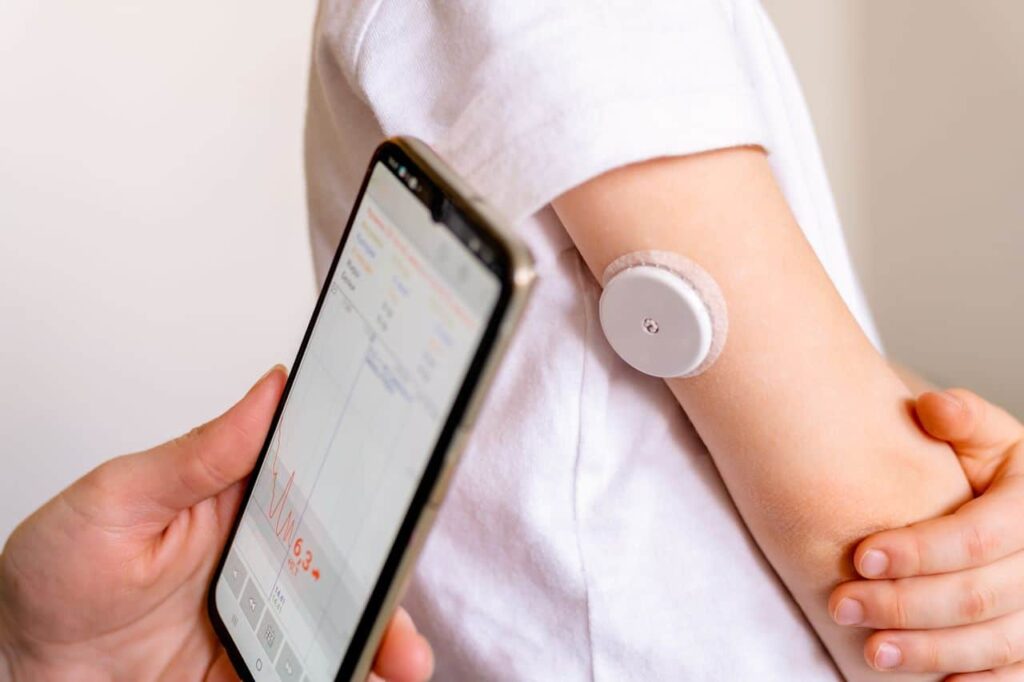Continuous glucose monitors (CGMs) have become increasingly popular in recent years, touted as a revolutionary tool for blood sugar monitoring. But are they just a fleeting health fad, or a glimpse into the future of personalized wellbeing? Let’s dive deeper and explore the potential of CGMs.
Understanding CGMs
Before we delve into the debate, let’s establish what a CGM is. Unlike traditional finger-pricking methods, CGMs are small, wearable devices inserted under the skin. They continuously measure blood sugar levels in interstitial fluid (fluid between cells) and transmit the data to a receiver or smartphone app. This provides a real-time picture of blood sugar fluctuations throughout the day, offering valuable insights for people managing diabetes.
CGMs for Diabetes Management: A Game Changer
For diabetics, CGMs are a game-changer. They offer a significant advantage over finger pricking, which only provides a snapshot at a specific time. With CGMs, diabetics can:
Gain Continuous Blood Sugar Visibility: CGMs provide a constant stream of data, allowing diabetics to understand how their body reacts to food, exercise, and medication. This empowers them to make informed decisions about their daily routines.
Reduce Blood Sugar Risks: Early detection of blood sugar spikes and dips enables diabetics to take corrective measures before experiencing health risks associated with uncontrolled blood sugar.
Improve Overall Glycemic Control: CGMs can significantly improve glycemic control, a crucial factor in preventing long-term complications like heart disease, kidney disease, and nerve damage.
Must Read The First Over-the-Counter Continuous Glucose Monitor
The Allure of CGMs for Non-Diabetics: Health Fad or Future-Proof?
The potential benefits of CGMs have piqued the interest of health-conscious individuals beyond the diabetic community. But can CGMs offer similar advantages for non-diabetics? The answer is complex.
Pros: Unveiling the Glycemic Impact of Everyday Life
For non-diabetics, CGMs can be a valuable tool for understanding how their bodies respond to different foods and activities. This data can be used to:
Optimize Diet and Nutrition: By tracking blood sugar responses to specific foods, individuals can identify patterns and tailor their diet for better blood sugar management, potentially reducing the risk of developing prediabetes or type 2 diabetes.
Enhance Exercise Strategies: CGMs can reveal how exercise impacts blood sugar levels, allowing individuals to personalize their workout routines for optimal performance and recovery.
Promote Weight Management: Understanding how food choices affect blood sugar can empower individuals to make informed dietary decisions that support weight management goals.
Also, Read About CGMs in noncritical care hospitals optimizes glycemic control
Cons: The Need for More Research and Individualized Guidance
While the potential benefits for non-diabetics are intriguing, it’s important to acknowledge the limitations of CGMs in this context. Here’s why CGMs might not be a one-size-fits-all solution:
Limited Long-Term Data: There’s a lack of long-term research on the impact of CGM use on overall health outcomes for non-diabetics. More studies are needed to establish a clear cause-and-effect relationship between blood sugar fluctuations and long-term health fad in healthy individuals.
Individualized Interpretation: Blood sugar responses can vary significantly between individuals. Without proper guidance from a healthcare professional, interpreting CGM data for non-diabetics can be challenging. Misinterpretations could lead to unnecessary anxiety or restrictive dietary changes.
Cost and Accessibility: CGMs are currently expensive, and insurance coverage for non-diabetic use might be limited. This poses a barrier to widespread adoption.
Don’t miss the Guide about Wegovy Dosage Guide: The Best Way For Weight Loss
The Future of CGMs: Personalized Wellness on the Horizon
Despite the limitations, CGMs hold immense promise for the future of personalized well-being. As technology advances and research expands, we can expect to see:
More Affordable and User-Friendly CGMs: With wider adoption, the cost of CGMs is likely to decrease, making them more accessible to a broader audience. Additionally, user-friendly interfaces and better data interpretation tools can empower individuals to leverage CGM data effectively.
Integration with Wellness Apps and AI: Imagine a future where CGM data seamlessly integrates with wellness apps and artificial intelligence (AI) to provide personalized recommendations on diet, exercise, and lifestyle modifications. This could revolutionize preventative healthcare.
Conclusion: Health Fad or the Future of Wellbeing
While CGMs might not be a mainstream health fad, they represent a significant step toward personalized health management. However, for non-diabetics, CGMs are currently a tool for increased awareness, not a guaranteed path to improved health.
Thinking about using a CGM? Consult your healthcare professional to discuss if it’s right for you and how to interpret the data effectively within the context of your overall health goals. As research progresses and technology evolves, CGMs have the potential.


